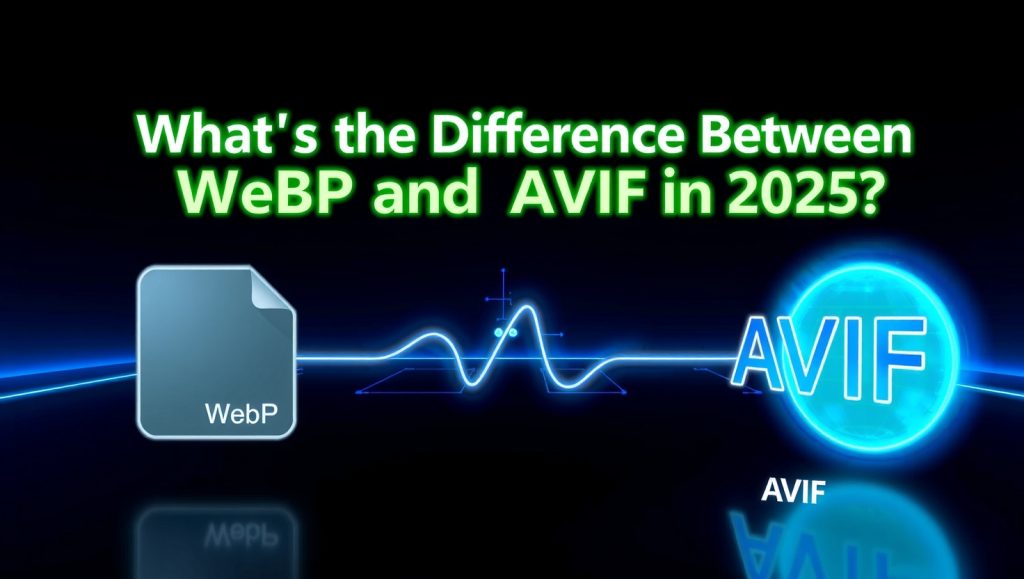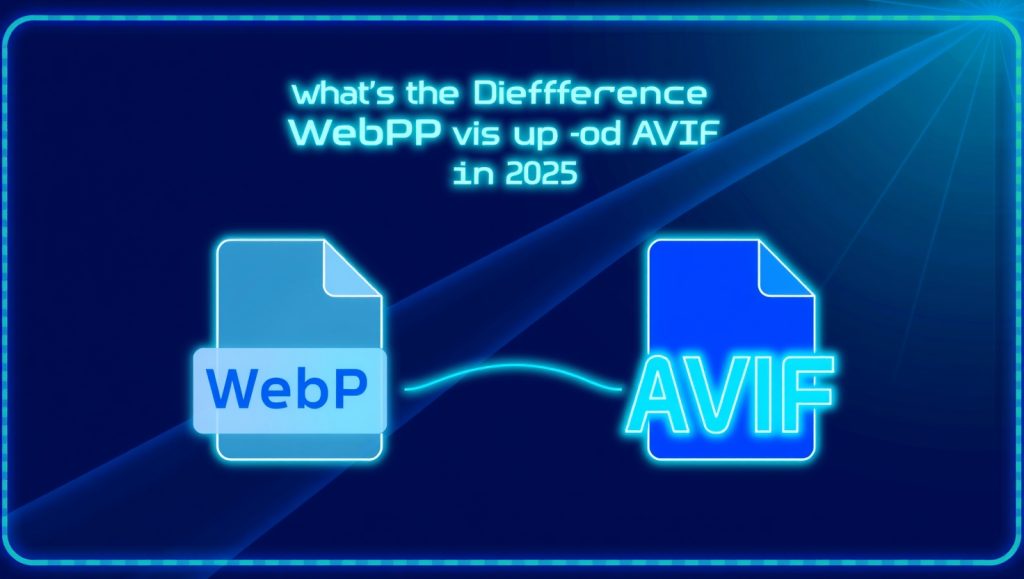Fast forward to 2025 and there is no denying that we need to deliver good quality web content quickly. As image formats go, it has come a long way over the years, and in 2025 the two biggest frontrunners for the most efficient image delivery are WebP and AVIF. Although both formats are fairly new, developed to eventually replace older formats like JPEG and PNG, these two stock image formats have key differences in compression, quality, browser compatibility, and file size.
The image format you choose can dramatically affect your website’s load speed, the overall user experience and even your Search Engine Optimization (SEO) rating. Both formats seek to deliver the lowest file size keeping visual quality, but put in a head-to-head competition against each other in 2025 – which one will deliver superior performance?
This article sets out the technical differences, the real world performance, the compatibility headaches, and the best use cases of each format so that you can start making better decisions for delivering images on the web. Regardless of whether you are a developer, designer, or simply someone managing a small business website, knowing how the two image formats differ from each other will position you to make more informed decisions on how you will be delivering images on the web.
Compression Efficiency and Image Quality

WebP A Balance Between Size and Quality
Originally developed by Google, WebP has stood the test of time since its debut in 2010, and it’s still a widely used image format. One of the great things about WebP is that you can generally achieve better compression than JPEG without sacrificing too much image quality. WebP also offers lossy and lossless compression, and it can also handle transparency (alpha channel) and animation.
In 2025, WebP is still a very much utilized image format. Its longevity is due to its maturity and wide browser support. When you compress images in WebP, most of the time, you will get file sizes that are 25-35% smaller than JPEGs while producing a visually similar file in most cases. If you’re running an ecommerce website, a blog, or portfolio site where loading time matters, WebP can be a strong choice.
One of the great things about WebP is that it offers a “good enough” compromise. AVIF may compress even better than WebP, but if project or user needs prioritize conversion time and compatibility over absolute file size reduction, WebP maintains some currency. WP image optimization plugins and website speed optimization services also continue to use WebP as their output standard.
AVIF Leading the Pack in Compression Power
AVIF, short for AV1 Image File Format, is based on the AV1 video codec created by the Alliance for Open Media. It’s newer than WebP, but is gaining a reputation for its ability to compress images more aggressively – often saving image sizes on average 30-50% more than WebP, often due to its ability to handle complex imagery.
What makes AVIF particularly exciting in 2025 is its applications with HDR images, gradients, and photographic detail with small file sizes. In a side-by-side comparison AVIF images often show fewer artifacts than WebP for the same or smaller file sizes.
Overall, the downside is encoding speed. For example, it typically takes longer to compress an image to AVIF than to WebP – this can matter for dynamic or high-traffic platforms. But the speed trade-off is still impressive if you plan on utilizing any of these AVIF benefits to generate high-quality lightweight images.
If your priority is maximum compression with excellent image quality — especially for responsive design websites AVIF is worth the switch.
Browser and Platform Compatibility
WebP: Universally Supported and Reliable
One reason WebP stands tall is its high compatibility. Almost all modern-day browsers, such as Chrome, Firefox, Safari, Edge, and many older Android browsers, accepted WebP by default as of 2025. This makes it easy for developers: no fallback strategies needed or conditional rendering for different browsers; the CMS platforms (such as WordPress and Shopify) also provide native support for WebP, and this makes image optimization less of a headache for small business website owners too.
In terms of supporting ecosystem, WebP has grown up with a comprehensive collection of tools. From online image conversion to editing software like Photoshop and GIMP, dealing with WebP files in 2025 is just about as easy as dealing with JPEG or PNG files.
AVIF: Rapidly Growing, But Still Catching Up
AVIF has made tremendous strides in browser support in recent years. Currently, in 2025, Chrome, Firefox, Safari (from version 16 onward), and Edge all support AVIF, among others. However, its adoption in mobile apps, legacy browsers, and some third-party platforms is not as widespread as WebP just yet.
This little limitation means
the developer community may have to still account for fallbacks every time they use AVIF, serving AVIF when available and defaulting to WebP or JPEG when AVIF is not supported. While this may add a little bit of complexity, many modern frameworks or CMS have either introduced plugins or built-in support for swapping formats automatically.
AVIF is also becoming more frequent in enterprise-grade CDNs such as Cloudflare as well as image optimization tools like Squoosh and ImageKit. Therefore, while AVIF is not as universally adopted and integrated as WebP just yet, its trajectory is impressive.
Use Cases When to Use WebP or AVIF in 2025

When WebP Makes More Sense
WebP will continue to excel in situations where compatibility and speed are more important than image optimization. If you want your web pages to load fast across older browsers or on older platforms (or run a busy blog or ecommerce shop), it is hard to beat the speed and reliability that comes with WebP’s compression.
For example, WebP is absolutely perfect for all your product images, thumbnails, banners, and even for smaller animations. You will lose sleep over worrying about broken images or pixelated fallbacks because of widespread support for WebP across all platforms. Plus, you also get a fast conversion workflow and better integration with third-party services like CDN.
It is certainly a lot easier for your users with little or no technology experience to work with WebP files from drag-and-drop plugins or auto-conversions. As long as your web page isn’t directing you to look elsewhere, you do not need to switch if you are continuing good work using WebP files, just don’t ignore AVIF.
When AVIF Is the Better Choice
AVIF’s improved compression means it is a powerful option to consider for any website where image performance is essential, such as photography portfolios, media-heavy landing pages, and minimalist design-centric websites.
Because AVIF is able to compress images with greater accuracy, your site can show ultrafast Loading Times without sacrificing visibility. Fast load times can ultimately give you the upper hand in SEO rankings, as well as user engagement, especially with mobile devices that benefit from data savings..
You will also find AVIF even more applicable to future-proof applications that require additional features such as HDR content support, dynamic loading, and pixel-level precision. If you think of designing a design system that is cutting edge, or you are thinking of a site refresh in 2025, consider leveraging AVIF from the start. Just be sure to LAZY LOAD or actively present fallback images to ensure accessibility.
Conclusion
In 2025, both WebP and AVIF offer strong benefits, but they cater to slightly different needs. WebP provides a great mix of quality, speed, and compatibility, making it perfect for most standard websites. On the other hand, AVIF pushes the boundaries of what’s possible in compression and visual clarity — ideal for developers looking to fine-tune their performance metrics.
So, what’s the best choice?
- Use WebP if you want fast results, easy integration, and broad support.
- Use AVIF if you’re aiming for next-level optimization and can manage the slightly more complex setup.
You don’t necessarily have to choose one over the other. Many modern tools and content delivery networks allow you to serve AVIF where supported and fall back to WebP for other users — creating a seamless experience for everyone.